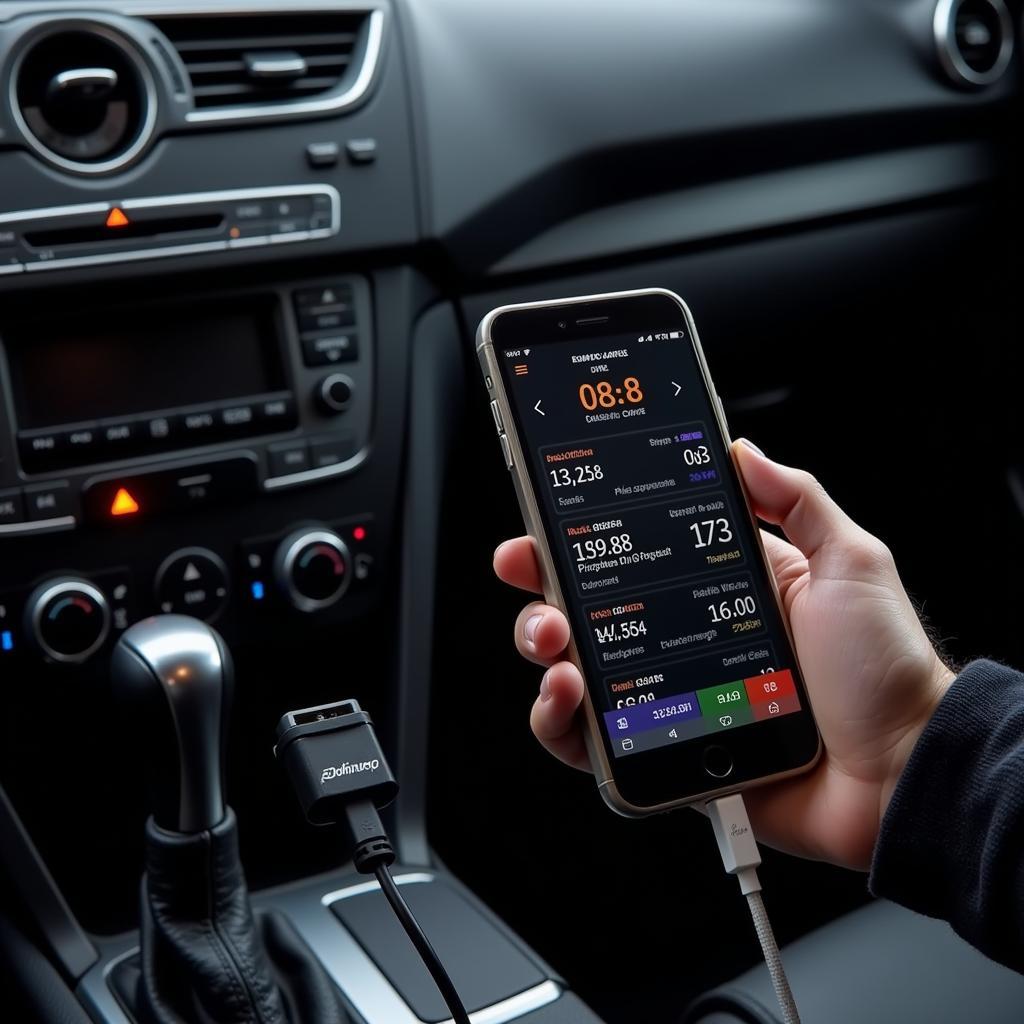In today’s digital age, even car repairs are getting a tech upgrade. Gone are the days of relying solely on a mechanic’s intuition. Now, with a Bluetooth car diagnostic scanner, you can unlock your car’s inner workings right from your smartphone. But with so many options flooding the market, what exactly makes a good Bluetooth car diagnostic scanner?
This comprehensive guide dives deep into the world of Bluetooth car diagnostic scanners, equipping you with the knowledge to make an informed decision. Whether you’re a car enthusiast, a DIY mechanic, or a professional looking to upgrade your toolkit, read on to discover the key features and considerations when choosing the right scanner for your needs.
Why You Need a Bluetooth Car Diagnostic Scanner
Remember the dreaded “check engine” light? A Bluetooth car diagnostic scanner is your key to deciphering those cryptic warnings. This nifty device plugs into your car’s OBD-II port (usually located under the dashboard) and communicates wirelessly with your smartphone or tablet via Bluetooth.
But its use goes beyond just reading and clearing those pesky codes. A good Bluetooth scanner empowers you to:
- Diagnose Engine Problems: Identify issues with your engine, transmission, exhaust system, and more.
- Monitor Real-Time Data: Track live sensor readings like speed, RPM, coolant temperature, and fuel pressure, giving you insights into your car’s performance.
- Customize Your Driving Experience: Some advanced scanners allow you to customize car settings, such as automatic door locking or adjust the throttle response.
Key Features of a Good Bluetooth Car Diagnostic Scanner
Not all Bluetooth car diagnostic scanners are created equal. To ensure you’re getting the most bang for your buck, here’s what to look for:
1. Compatibility
This is non-negotiable. Ensure the scanner you choose is compatible with your car’s make, model, and year. Most scanners work with a wide range of vehicles, but it’s crucial to double-check before making a purchase.
2. Reading and Clearing Codes
A fundamental feature of any scanner is its ability to read and clear diagnostic trouble codes (DTCs). Look for a scanner that provides a clear explanation of each code, not just the code itself.
3. Live Data Streaming
For those who like to delve deeper, live data streaming is essential. This feature allows you to monitor various engine parameters in real-time, helping you identify potential problems as they happen.
4. User-Friendly Interface
A good scanner should be easy to use, even for beginners. Look for a scanner with a clean, intuitive app interface that makes navigating through menus and interpreting data a breeze.
5. Additional Features
Many scanners offer extra perks, such as:
- ABS and Airbag Scanning: Diagnose issues with your anti-lock braking system (ABS) and airbags.
- Battery Voltage Monitoring: Keep an eye on your car’s battery health.
- Smog Check Readiness: Determine if your vehicle is ready to pass an emissions test.
Choosing the Right Scanner for You
Now that you know what to look for, consider these factors to narrow down your options:
- Your Budget: Scanners range in price, so determine how much you’re willing to spend.
- Your Skill Level: Are you a DIY enthusiast or a seasoned mechanic? Choose a scanner that aligns with your technical expertise.
- Your Car’s Specific Needs: Consider your car’s make and model, as well as any known issues it might have.
[car scanner diagnostic tool review]
Bluetooth vs. Wired Scanners: What’s the Difference?
While both Bluetooth and wired scanners perform the same basic functions, there are some key differences:
Bluetooth Scanners:
- Pros: Convenience of wireless connectivity, portability, ability to easily share data.
- Cons: Potential for connection issues, limited range, reliance on a charged smartphone or tablet.
Wired Scanners:
- Pros: More reliable connection, often faster data transfer speeds, no need for external devices.
- Cons: Lack of portability, can be less convenient to use, often more expensive.
Tips for Using a Bluetooth Car Diagnostic Scanner
- Consult Your Owner’s Manual: Before plugging anything into your car, always refer to your owner’s manual for the location of the OBD-II port and any specific instructions.
- Download the Right App: Each scanner works with a dedicated app, so make sure to download and install the correct one on your smartphone or tablet.
- Keep Your Scanner Updated: Manufacturers often release software updates that improve functionality and compatibility, so stay updated.
Conclusion
Investing in a good Bluetooth car diagnostic scanner is empowering. It puts you in the driver’s seat when it comes to understanding and maintaining your vehicle’s health. By considering the key features and following the tips outlined in this guide, you can choose the best scanner for your needs and embark on a journey of confident car ownership.
For expert advice and personalized recommendations on Bluetooth car diagnostic scanners, contact ScanToolUS at +1 (641) 206-8880 or visit our office at 1615 S Laramie Ave, Cicero, IL 60804, USA. Our team of specialists is ready to assist you in finding the perfect tool to keep your car running smoothly.


